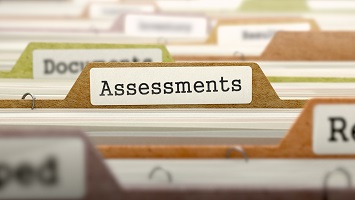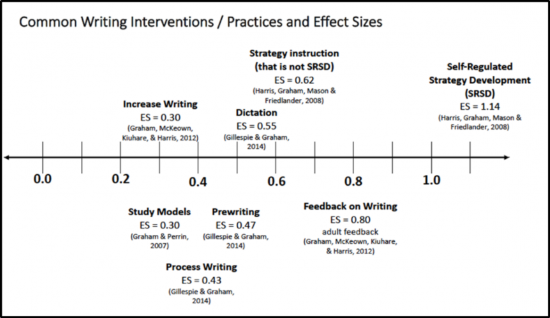Graduation rates across the country are rising, but some populations of students are still struggling to complete high school (Civic Enterprises, 2017). Dropout rates have remained constant for the last 30 years (Institute of Educational Services (IES), 2008). Students with disabilities, LGBTQI students (lesbian, gay, bisexual, transsexual, transgender, queer, questioning, intersex), students who are English language learners, African American, American Indian, and Hispanic and Latino students (particularly male students) have higher drop-out rates (Faircloth, S., Toldson, I., Lucio, R., year; GLSEN, year; ) Students who drop out of school suffer higher rates of unemployment, poverty, incarceration, homelessness, and depression. In order to increase graduation rates for all groups of students, the risk factors for drop-out must be identified and addressed.
The graduation rate for students with disabilities is more than 20% lower than for students in general (Wilkins & Huckabee, 2014). This gap increases for specific disabilities and students with disabilities who are ethnic and racial minorities. Students with emotional disabilities (40%) and African American (40%) and Hispanic/Latino students (48%) with disabilities have the highest rates of drop out (Wilkins & Huckabee, 2014).
Drop-Out Rates i n the Lower Hudson Valley
n the Lower Hudson Valley
Students in the Lower Hudson Valley region are dropping out at similar rates as their peer groups nationally. As shown in this table, students who are English Language Learners have the highest rate of drop-out and lowest graduation rate in our region.
Preventing Drop Out: Steps to Intervention
- Identify Students who are at risk dropping out. Implementing a system to track student attendance, achievement, and suspensions/expulsions can provide the opportunity to re-engage students who are at risk for dropping out.
- Implement programs to support student engagement. Academic intervention, active learning, and enrichment programs increase student engagement and school completion. IES (2008) provides a summary of specific academic interventions to decease dropout on page 23 of the Dropout prevention guide listed in the resource section of this topic brief. Work-based learning programs, career and technical education, tutoring, internships, and volunteers experiences increase school retention (National Dropout Prevent Center; Wilkins & Huckabee, 2014)
- Help students plan for the future. Comprehensive transition programs help students create an appropriate pathway to be successful. Students who feel prepared for life after high school are less likely to dropout. (Atwood et al., 2005; as cited in Wilkins & Huckabee, 2014). Including work-readiness instruction and exposure to postsecondary options is correlated with increased school retention (IES,2008).
- Implement professional development to increase staff awareness of cultural, linguistic, economic, and academic diversity (CLEAD) and support strategies. Strategies should include instructional strategies on differentiation, integrating culturally responsive teaching practices into the curriculum, and how to create safe learning environments. Personalizing the learning environment and instructional process is correlated with increased school retention (IES, 2008).
- Assign adult advocates/mentors to students who are at risk of dropping out. Students who have relationships with adults feel a greater level of involvement in the school community (IES, 2008). Advocates can also connect students with services, programs, and extra-curricular activities and provide a level of accountability for attendance and academic requirements. Establishing a regular meeting time a school will encourage a consistent relationship.
- Monitor the implementation of interventions. Use the data tracking system to measure whether or not interventions decrease drop-out rate and checklists to measure effective implementation of interventions. IES (2008) provides a checklist for carrying out evidence-based recommendations on page 10 of the Dropout prevention guide listed in the resource section of this topic brief.
Understanding the Phenomenon in Your School: Creating a Data System
In order to begin addressing the problem of drop-out at your school, you will need to understand how it is affecting your students. Wilkins and Huckabee (2014) recommend utilizing a data system that provides an accurate assessment of the dropout rates by specific populations. This will allow a school to identify student populations in need of targeting support as well as comparison data to measure the effectiveness of interventions.

The New York State Education Department provides comprehensive data points on the districts in New York State, located at data.nysed.gov. Information on academic performance and graduation rates can be sorted by district, county, region, and subgroups.
Once you gather the district’s data from data.nysed.gov, the National Technical Assistance Center on Transition provides a pre-programmed excel sheet that a district may use to organize their data and graph the information. The link for this worksheet can be found to the left. You may also choose to make a simple graph similar to Table 1 in this Topic Brief.
Additional Resources
Decreasing Dropout Rates for Minority Male Youth with Disabilities from Culturally and Ethnically Diverse Backgrounds: http://www.transitionta.org/sites/default/files/graduation/NDPC-SD_Minority%20Male%20Dropout%20Monograph%202014.pdf
Effective Interventions in Drop-Out Prevention: A Research Synthesis: The Effects of Cognitive-Behavioral Interventions on Dropout for Youth: http://www.transitionta.org/sites/default/files/graduation/NDPC-SD_Research_Synthesis_Effects_of_CognitiveBehavioralInterventions.pdf
Institute of Education Sciences. (2008). Drop-Out Prevention Guide: http://www.transitionta.org/system/files/resourcetrees/DO_Prev_Guide.pdf?file=1type=nodeid=677
National Technical Assistance Center on Transition Effective Practices and Predictors Matrix: School Completion Practices: https://transitionta.org/sites/default/files/EPP_Matrix_Grad.pdf
National Dropout Prevention Center: 15 Effective Strategies for Dropout Prevention: https://dropoutprevention.org/wp-content/uploads/2015/05/15_eff_strats.pdf
Transition Coalition Online Learning Module on Strategies for School Completion: https://transitioncoalition.org/blog/school-completion-introduction/
Wilkins, J. & Huckabee, S. (2014). A Literature Map of Dropout Prevention Interventions for Students with Disabilities: http://www.ndpc-sd.org/documents/wilkins-huckabee-lit-review.pdf


 Data-Driven Decision-Making
Data-Driven Decision-Making  Increasing Post-School Success through Interagency Collaboration
Increasing Post-School Success through Interagency Collaboration  How Can We Improve Deeper Learning for Students with Disabilities?
How Can We Improve Deeper Learning for Students with Disabilities?  Positive Classroom Management: Creating an Environment for Learning
Positive Classroom Management: Creating an Environment for Learning  Self-Determination Skills Empower Students of All Ages
Self-Determination Skills Empower Students of All Ages  Fidelity of Implementation: What is it and Why does it Matter?
Fidelity of Implementation: What is it and Why does it Matter?  Rethinking Classroom Assessment
Rethinking Classroom Assessment  A Three-Step Approach to Identifying Developmentally Appropriate Practices
A Three-Step Approach to Identifying Developmentally Appropriate Practices  Transforming Evidence-Based Practices into Usable Innovations: A Case Study with SRSD
Transforming Evidence-Based Practices into Usable Innovations: A Case Study with SRSD